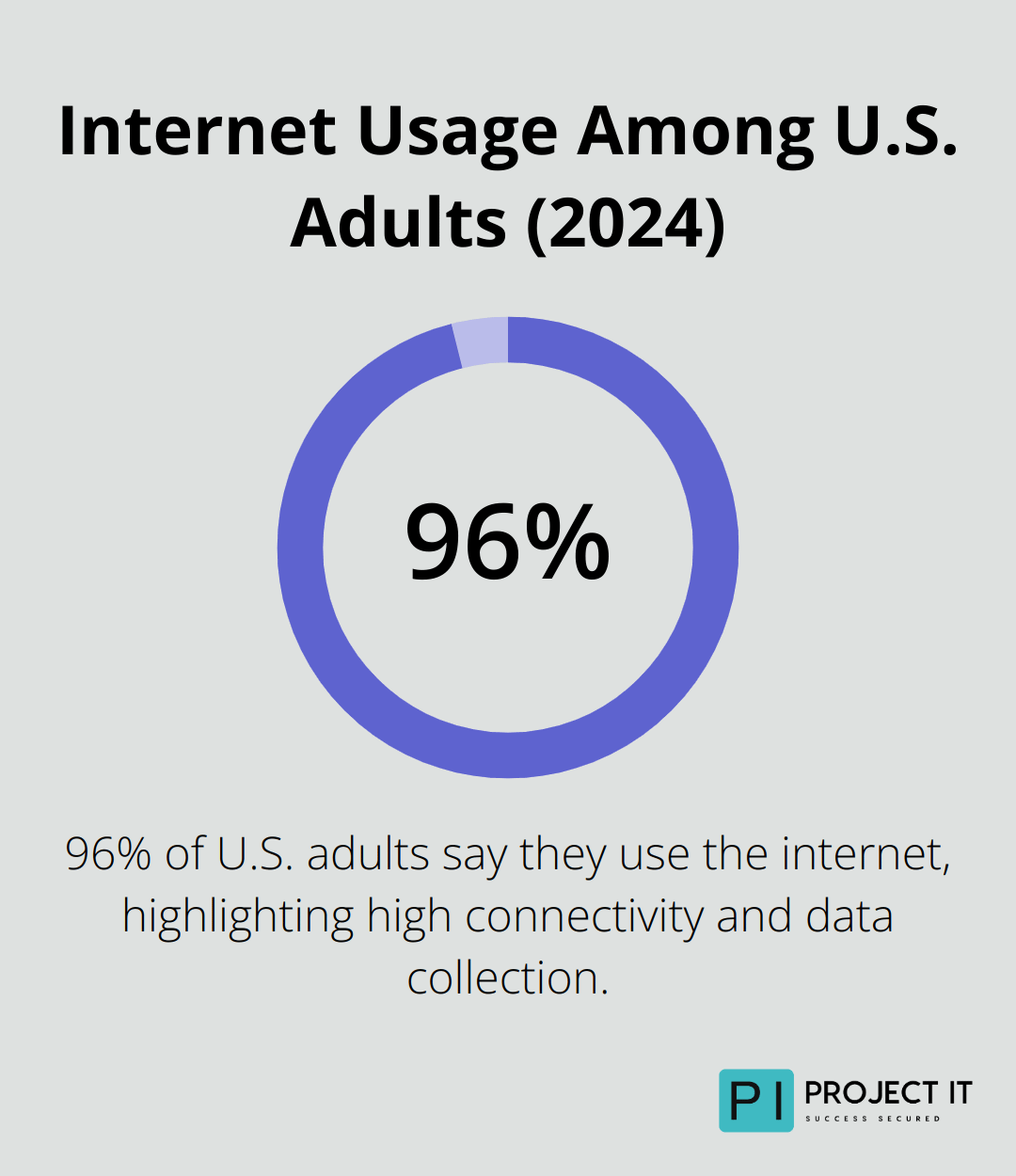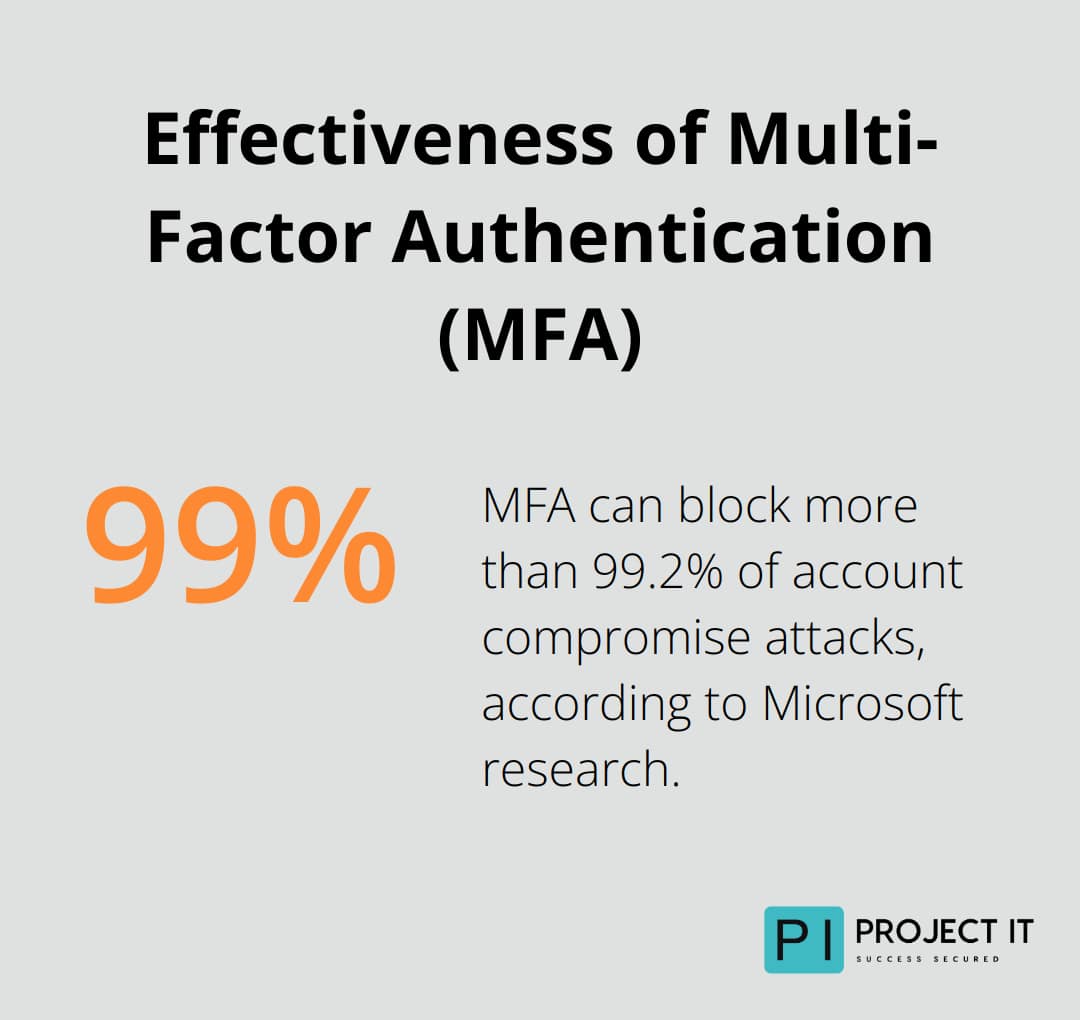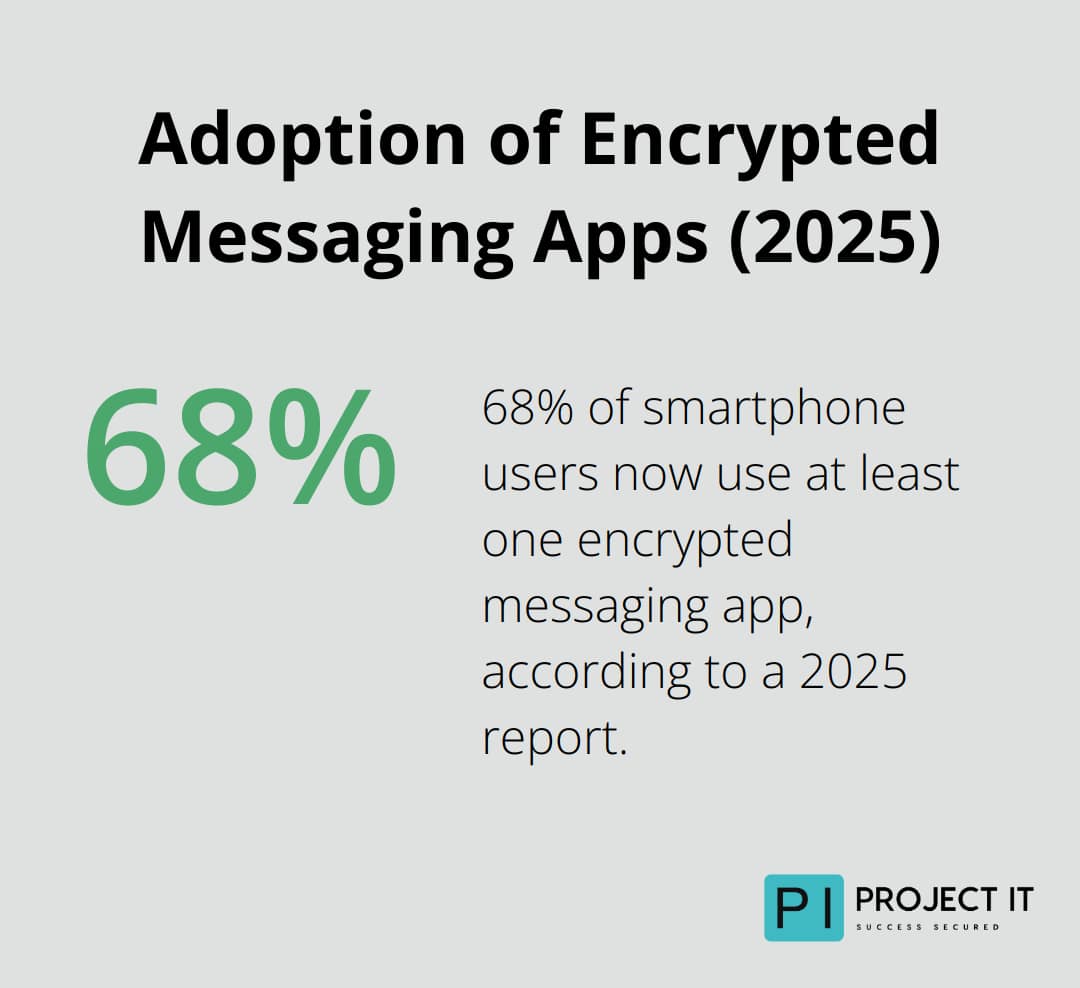In our increasingly connected world, data privacy has become a critical concern. At Project IT, we’ve seen firsthand how personal information can be vulnerable to breaches and misuse.
This blog post will explore practical strategies to protect your digital footprint and maintain control over your sensitive data. We’ll cover best practices, tools, and technologies that can help safeguard your privacy in today’s digital landscape.
What Is Data Privacy and Why Does It Matter?
The Scope of Personal Data Collection
In today’s digital landscape, data privacy has become a critical concern for individuals and businesses alike. Every time you browse the internet, use social media, or make an online purchase, you leave a digital footprint. This footprint consists of various types of personal data, including:
- Basic information (name, address, phone number)
- Financial details (credit card numbers, bank account information)
- Browsing history and online behaviour patterns
- Location data from mobile devices
- Health and fitness information from wearable devices
A 2024 study by the Pew Research Centre reveals that 96% of U.S. adults say they use the internet. This high level of connectivity results in an unprecedented amount of personal data being collected, stored, and analysed by companies and organisations.

The Real Risks of Data Breaches
Data breaches and misuse pose significant risks to individuals and organisations. In 2025, the global average cost of a data breach decreased by 9% compared to the previous year. These breaches can lead to:
- Identity theft and financial fraud
- Reputational damage for businesses
- Loss of customer trust and loyalty
- Legal consequences and regulatory fines
A striking example is the 2023 MGM Resorts cyberattack, which resulted in a $100 million loss for the company and exposed personal information of millions of customers.
The Importance of Data Privacy Awareness
Understanding data privacy is the first step in protecting yourself and your business. A 2024 survey by Norton revealed that 85% of global adults want to do more to protect their online privacy, but many lack the knowledge or tools to do so effectively.
Everyone should have the power to control their digital footprint. This means knowing what data is being collected, how it’s being used, and what steps you can take to protect it.
Taking Control of Your Digital Footprint
Protecting your data privacy doesn’t mean you have to go off the grid. It’s about making informed decisions and using the right tools. Some practical steps include:
- Regular reviews and updates of privacy settings on social media and other online accounts
- Use of privacy-focused browsers and search engines
- Caution about the information you share online, especially on public forums
Data privacy is an ongoing process, not a one-time fix. Stay informed about the latest privacy laws and technologies, and don’t hesitate to seek expert advice when needed.
The Role of Technology in Data Privacy
As technology advances, so do the tools available for protecting your data. Virtual Private Networks (VPNs), encrypted messaging apps, and privacy-focused browsers are just a few examples of technologies that can enhance your online privacy.
However, it’s important to note that no single tool or technology can guarantee complete data privacy. A comprehensive approach that combines technology, awareness, and best practices is necessary to effectively protect your personal information in today’s connected world.
In the next section, we’ll explore specific best practices for protecting your personal data, including password management, two-factor authentication, and safe browsing habits.
How to Protect Your Personal Data
At Project IT, we understand the importance of robust data protection practices. Here are practical steps you can take to safeguard your personal information in today’s digital landscape.
Create Strong, Unique Passwords
The first defence for your online accounts is a strong, unique password. We recommend using a password manager to generate and store complex passwords for each of your accounts. These tools create passwords that are difficult to crack and can help you store secrets securely through salting and hashing.
A study by the National Institute of Standards and Technology (NIST) recommends enabling ‘Show Password’ features and using password managers for increased password strength.
Use Multi-Factor Authentication
Multi-factor authentication (MFA) adds an extra layer of security to your accounts. According to Microsoft research, MFA can block more than 99.2% of account compromise attacks. Enable MFA on all your important accounts, especially those containing sensitive information like financial or health data.

Many services offer various MFA options, including:
- SMS codes
- Authenticator apps (like Google Authenticator or Authy)
- Hardware security keys (such as YubiKey)
We recommend authenticator apps or hardware keys over SMS codes, as they provide better protection against SIM swapping attacks.
Update Your Software Regularly
Regular software and application updates are essential for maintaining your digital security. In 2024, Verizon’s Data Breach Investigations Report revealed that 43% of data breaches exploited unpatched vulnerabilities.
Set up automatic updates for your operating system, browsers, and other software whenever possible. For mobile devices, check for updates weekly and install them promptly.
Use Public Wi-Fi Safely
Public Wi-Fi networks are convenient but can be risky. A 2025 survey by Norton found that 60% of consumers feel their personal information is unsafe when using public Wi-Fi.
When using public Wi-Fi:
- Avoid accessing sensitive accounts (e.g., banking, email)
- Use a reputable VPN service to encrypt your connection
- Turn off auto-connect features on your devices
If you need to access sensitive information while away from home, try using your mobile data plan instead of public Wi-Fi.
Review Your Social Media Privacy Settings
Social media platforms frequently update their privacy policies and settings. Make it a habit to review your privacy settings every few months. A 2024 Pew Research Centre study found that 79% of social media users were concerned about how companies were using the data they collected.
Key areas to focus on include:
- Limit who can see your posts and personal information
- Review and revoke third-party app permissions
- Disable location tracking when not necessary
The less personal information you share publicly, the harder it becomes for bad actors to exploit it.
These practices will significantly enhance your data privacy. However, digital security requires ongoing attention. Stay informed about the latest threats and protection methods, and seek expert advice when needed. In the next section, we’ll explore tools and technologies that can further boost your data privacy efforts.
Enhancing Data Privacy with Advanced Tools
At Project IT, we’ve observed how the right tools can significantly boost your data privacy efforts. Let’s explore some cutting-edge technologies that can help you take control of your digital footprint.
The Power of Virtual Private Networks
Virtual Private Networks (VPNs) are essential for protecting your online activities. They encrypt your internet connection, making it nearly impossible for hackers or ISPs to intercept your data. A 2024 study by TheBestVPN found that 31% of internet users worldwide use VPNs. We recommend using reputable VPN services (like NordVPN or ExpressVPN) which offer robust encryption and a strict no-logs policy.
Secure Communication with Encrypted Messaging
Encrypted messaging apps protect sensitive conversations. Signal uses end-to-end encryption and doesn’t store any user data. WhatsApp, while owned by Meta, also offers end-to-end encryption. A 2025 report by the Electronic Frontier Foundation revealed that 68% of smartphone users now use at least one encrypted messaging app.

Streamlining Security with Password Managers
Password managers revolutionise online security. They generate and store complex, unique passwords for all your accounts, which significantly reduces the risk of credential-based attacks. Using a password manager (such as 1Password or Bitwarden) can help you manage this complexity while enhancing your security.
Browsing Privately with Secure Browsers
Privacy-focused browsers gain traction as users become more aware of data tracking. Browsers like Brave and Firefox focus on user privacy, blocking trackers and ads by default. According to StatCounter, privacy-centric browsers saw a 15% increase in market share in 2025 compared to the previous year.
Blocking Unwanted Tracking
Ad blockers and tracker blockers maintain online privacy. They prevent companies from collecting your browsing data and serving targeted ads. uBlock Origin blocks over 99.9% of ads and trackers. A study by PageFair found that 42% of internet users worldwide now use ad blockers, highlighting the growing demand for online privacy.
These tools, when used in combination, create a robust defence against privacy intrusions. However, technology alone isn’t enough. You should stay informed about the latest privacy threats and regularly update your protection strategies in today’s rapidly evolving digital landscape.
Final Thoughts
Data privacy in our connected world requires constant vigilance and adaptation. The digital landscape evolves rapidly, and so do the threats to our personal information. We must stay informed and update our strategies regularly to protect our digital footprint effectively.
Technology offers incredible benefits, but often at the cost of our personal data. You can enhance your data privacy without sacrificing convenience by implementing best practices and using the right tools. Take control of your digital presence by understanding what data is collected about you and how it’s used.
At Project IT, we help businesses and individuals navigate the complex world of data privacy and cybersecurity. Our team provides cutting-edge solutions tailored to your specific needs (whether for organisational data protection or personal cybersecurity). Take charge of your data privacy today and secure your personal information in the digital landscape.


